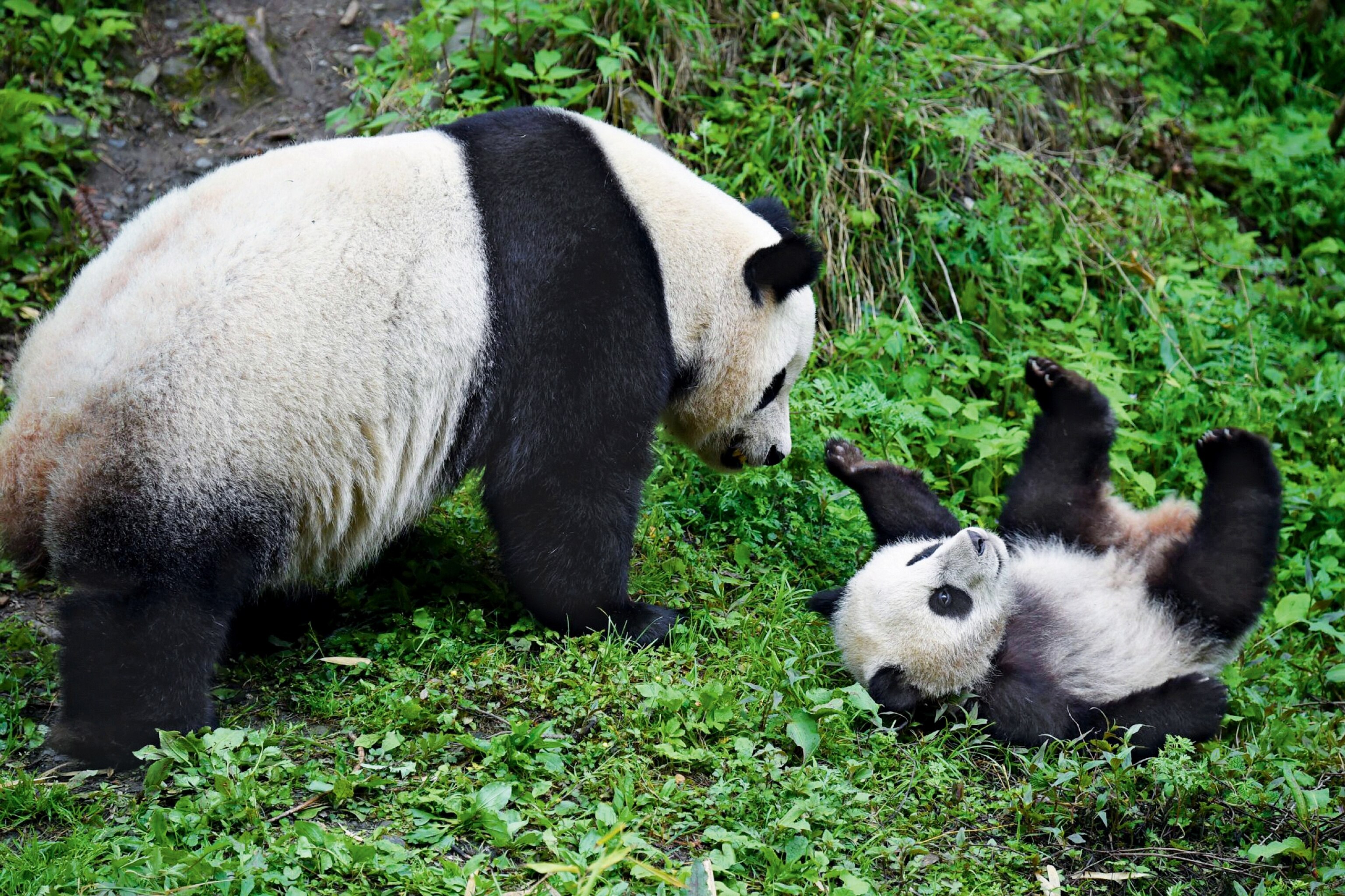











Who Discovered the Panda?
Until 1869, few had heard of the giant black-and-white creatures hiding in China’s forests. Decades later, pandamania gripped the world.
Though today giant pandas are known and loved worldwide, it wasn’t always so.
Ancient Chinese texts rarely mention the native animals. Westerners first learned of them in 1869 when French missionary Armand David, while in China, laid eyes on a distinctive black-and-white pelt and then bought a complete, dead specimen from local hunters. A zoologist in Paris wrote up the official description of Ailuropoda melanoleuca (literally, “cat foot, black and white”).
In 1929 Chicago’s Field Museum put two mounted pandas on display courtesy of the Roosevelt brothers, Theodore Jr. and Kermit. The two were sons of the 26th U.S. president, whose love of sport hunting ultimately propelled major conservation reforms. With the help of Sichuan Province locals, they brought home the first panda shot by white men for the museum’s new Asian Hall. Their feat prompted copycat expeditions funded by other museums.
As dead bears lost some allure, plans shifted to getting a live panda out of China. In December 1936 a wild cub named Su-Lin left Shanghai by ship in a wicker basket carried by Ruth Harkness, with an export permit reading “One dog, $20.00.” Harkness, a San Francisco socialite who had fallen in love as she bottle-fed Su-Lin on a visit to China, soon sold the animal to Chicago’s Brookfield Zoo. There, pandamania was instantaneous: More than 53,000 visitors showed up for the exhibit’s opening day.
That mania persists. Currently at least 20 zoos outside China boast giant panda displays. (For a time China gifted pandas to foreign countries; now the government rents out pairs for a million dollars a year and retains ownership of cubs born abroad.) Panda births and deaths make international news; web videos quickly go viral. The panda cam trained on a new cub at the Smithsonian’s National Zoo in Washington, D.C., had nearly 14 million views by the animal’s six-month birthday. During the 2013 government shutdown, fans had complained loudly when the camera went dark.
This tremendous devotion to pandas has roots in science. When humans see pandas, we are subconsciously affected by what developmental biologists call neoteny, the retention into adulthood of certain infant characteristics. That cute baby face and toddler-like behavior boost our body’s production of oxytocin, a hormone that makes us feel loving and protective.
Related Topics
You May Also Like
Go Further
Animals
- Octopuses have a lot of secrets. Can you guess 8 of them?
- Animals
- Feature
Octopuses have a lot of secrets. Can you guess 8 of them? - This biologist and her rescue dog help protect bears in the AndesThis biologist and her rescue dog help protect bears in the Andes
- An octopus invited this writer into her tank—and her secret worldAn octopus invited this writer into her tank—and her secret world
- Peace-loving bonobos are more aggressive than we thoughtPeace-loving bonobos are more aggressive than we thought
Environment
- This ancient society tried to stop El Niño—with child sacrificeThis ancient society tried to stop El Niño—with child sacrifice
- U.S. plans to clean its drinking water. What does that mean?U.S. plans to clean its drinking water. What does that mean?
- Food systems: supporting the triangle of food security, Video Story
- Paid Content
Food systems: supporting the triangle of food security - Will we ever solve the mystery of the Mima mounds?Will we ever solve the mystery of the Mima mounds?
- Are synthetic diamonds really better for the planet?Are synthetic diamonds really better for the planet?
- This year's cherry blossom peak bloom was a warning signThis year's cherry blossom peak bloom was a warning sign
History & Culture
- Strange clues in a Maya temple reveal a fiery political dramaStrange clues in a Maya temple reveal a fiery political drama
- How technology is revealing secrets in these ancient scrollsHow technology is revealing secrets in these ancient scrolls
- Pilgrimages aren’t just spiritual anymore. They’re a workout.Pilgrimages aren’t just spiritual anymore. They’re a workout.
- This ancient society tried to stop El Niño—with child sacrificeThis ancient society tried to stop El Niño—with child sacrifice
- This ancient cure was just revived in a lab. Does it work?This ancient cure was just revived in a lab. Does it work?
- See how ancient Indigenous artists left their markSee how ancient Indigenous artists left their mark
Science
- Jupiter’s volcanic moon Io has been erupting for billions of yearsJupiter’s volcanic moon Io has been erupting for billions of years
- This 80-foot-long sea monster was the killer whale of its timeThis 80-foot-long sea monster was the killer whale of its time
- Every 80 years, this star appears in the sky—and it’s almost timeEvery 80 years, this star appears in the sky—and it’s almost time
- How do you create your own ‘Blue Zone’? Here are 6 tipsHow do you create your own ‘Blue Zone’? Here are 6 tips
- Why outdoor adventure is important for women as they ageWhy outdoor adventure is important for women as they age
Travel
- This royal city lies in the shadow of Kuala LumpurThis royal city lies in the shadow of Kuala Lumpur
- This author tells the story of crypto-trading Mongolian nomadsThis author tells the story of crypto-trading Mongolian nomads
- Slow-roasted meats and fluffy dumplings in the Czech capitalSlow-roasted meats and fluffy dumplings in the Czech capital




